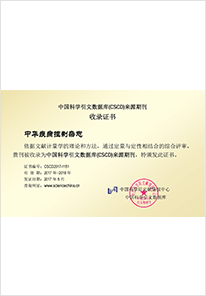Current Articles
2025, Volume 29, Issue 7
Display Method:
2025,
29(7):
745-749.
doi: 10.16462/j.cnki.zhjbkz.2025.07.001
Abstract:
2025,
29(7):
750-757.
doi: 10.16462/j.cnki.zhjbkz.2025.07.002
Abstract:
2025,
29(7):
758-764.
doi: 10.16462/j.cnki.zhjbkz.2025.07.003
Abstract:
2025,
29(7):
765-774.
doi: 10.16462/j.cnki.zhjbkz.2025.07.004
Abstract:
2025,
29(7):
775-781.
doi: 10.16462/j.cnki.zhjbkz.2025.07.005
Abstract:
2025,
29(7):
782-789.
doi: 10.16462/j.cnki.zhjbkz.2025.07.006
Abstract:
2025,
29(7):
798-803.
doi: 10.16462/j.cnki.zhjbkz.2025.07.008
Abstract:
2025,
29(7):
804-811.
doi: 10.16462/j.cnki.zhjbkz.2025.07.009
Abstract:
2025,
29(7):
812-818.
doi: 10.16462/j.cnki.zhjbkz.2025.07.010
Abstract:
2025,
29(7):
819-826.
doi: 10.16462/j.cnki.zhjbkz.2025.07.011
Abstract:
2025,
29(7):
827-834.
doi: 10.16462/j.cnki.zhjbkz.2025.07.012
Abstract:
2025,
29(7):
835-843.
doi: 10.16462/j.cnki.zhjbkz.2025.07.013
Abstract:
2025,
29(7):
844-849.
doi: 10.16462/j.cnki.zhjbkz.2025.07.014
Abstract:
2025,
29(7):
850-853.
doi: 10.16462/j.cnki.zhjbkz.2025.07.015
Abstract:
2025,
29(7):
854-862.
doi: 10.16462/j.cnki.zhjbkz.2025.07.016
Abstract:
2025,
29(7):
863-868.
doi: 10.16462/j.cnki.zhjbkz.2025.07.017
Abstract:


 Email alert
Email alert RSS
RSS Abstract
Abstract HTML
HTML PDF
PDF





